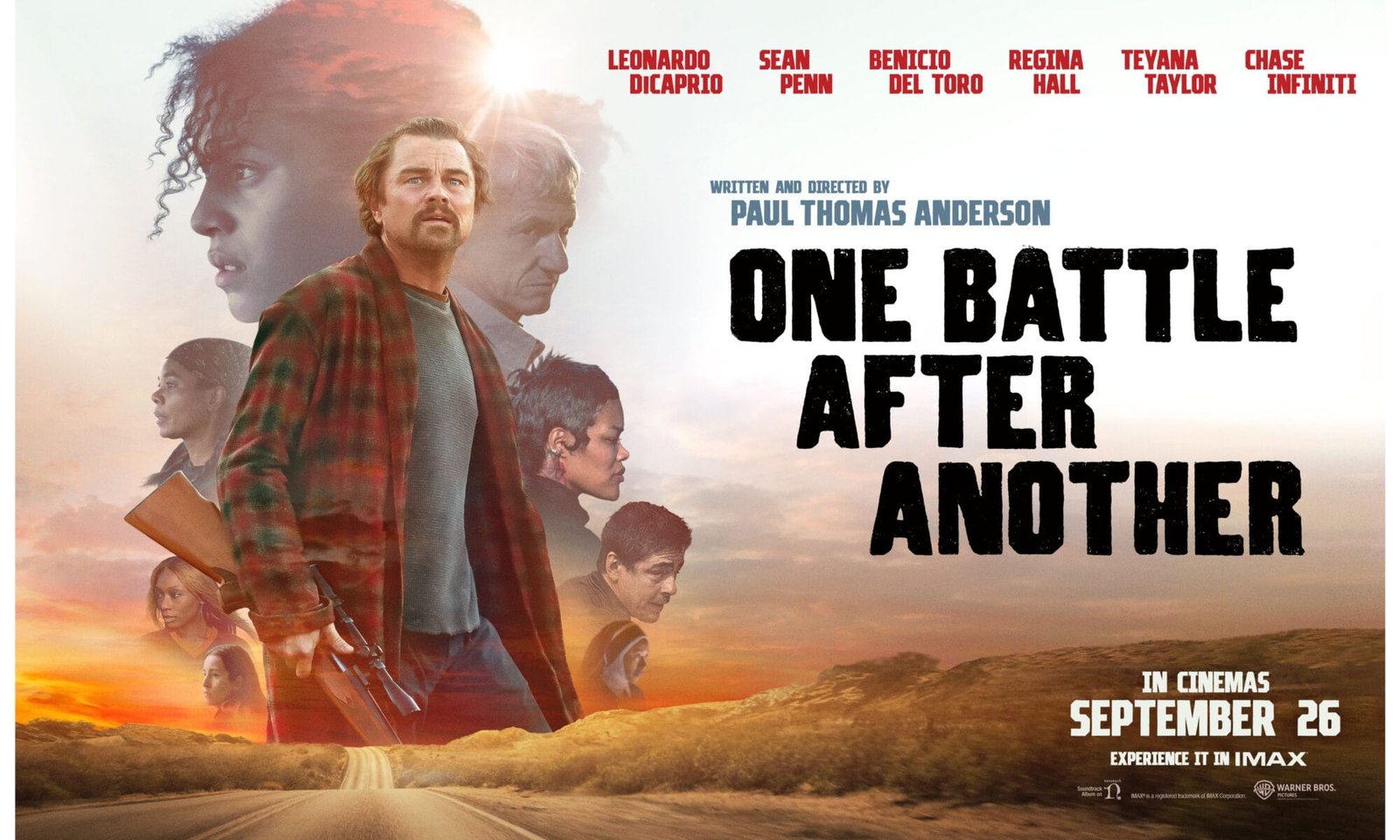Paul Thomas Anderson’s latest, the star-studded ensemble film One Battle After Another, is a politically urgent and emotionally direct movie that’s proving to be a major success, not only with critics and film aficionados but also with mainstream audiences, scoring the director his highest opening weekend at the box office. Loosely inspired by Thomas Pynchon’s novel Vineland, the film delves into the long-term consequences of revolutionary actions in America, shining a light on the cost of fighting for change and the limits of different generations’ ability to achieve it.
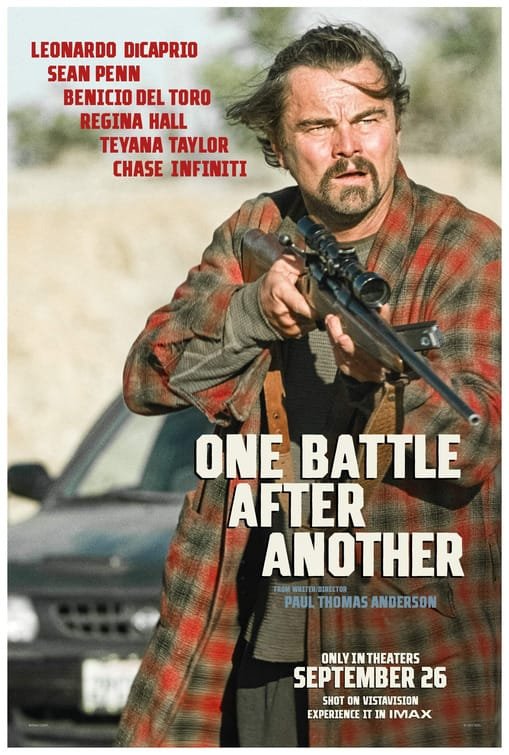
The film centers on Bob (Leonardo DiCaprio), a burnt-out and paranoid former revolutionary, whose tranquil life as a single father is shattered when his teenage daughter, Willa (Chase Infiniti), becomes a target. She’s being hunted by Col. Steven Lockjaw (Sean Penn), a white supremacist and former adversary determined to erase the evidence of his past dealings with Bob’s vanished partner and Willa’s mother, Perfidia (Teyana Taylor). Bob sets out to rescue Willa with the help of two other revolutionaries, Sensei Sergio (Benicio Del Toro) and Deandra (Regina Hall). The movie rejects the notion that political violence is a lasting solution, instead depicting it as a temporary fix that inevitably creates casualties and victims on both sides of the battle for a fairer America.
Direction
Director Paul Thomas Anderson brings his signature anti-authoritarian streak and iconoclast vision to the forefront. The film is a “feverish parable of insurgency and inheritance,” displaying an impressive command of his craft that makes his usual ambitions feel pragmatic, rather than indulgent. Anderson uses satire and paranoia, characteristic of post-war fiction, to explore the American political landscape without resorting to explicit, blunt contemporary commentary. He subtly highlights the ingrained nature of power structures through issues like immigration raids, militarized police, and the small-scale cruelties of patriotic groups, suggesting these habits shape character and civic life. The director’s current anxieties about handing a broken world to the next generation feel palpable; the film acts less as a “call to arms” and more as a tally of the never-ending “exasperating persistence” required in the culture wars and even in parenting.
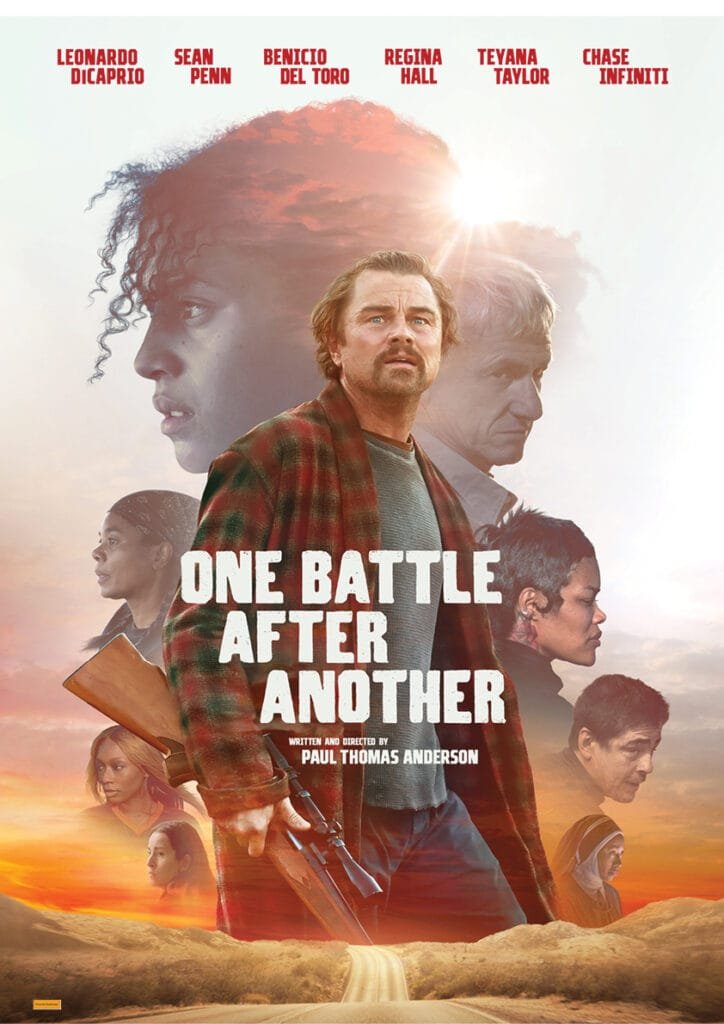
A key thematic element is Anderson’s self-aware look at the limitations of his own generation of revolutionaries, which he explores through Bob. The film is conscious of the fact that Black women have often been the driving force of significant social change, and the majority of the revolutionaries in the film are Black women, mirroring American realities. Anderson, a white man, deliberately centers Bob as the lead not as a “white savior,” but because his societal position affords him the ability to “take a backseat,” thus making his eventual disillusionment and inability to keep up with the changing methodology of revolution the film’s central struggle. The movie’s ultimate hope is placed in the next generation—personified by Willa—to find new, lasting solutions to the ongoing fight for true freedom, which Del Toro’s character defines as having “No fear.”
Acting
The ensemble cast delivers performances that are both compelling and hilarious.
Leonardo DiCaprio as Bob (formerly Pat Calhoun) plays the former radical with a particular, unsentimental humility. His character is a pitiable, weed-smoking burnout whose fervor has decayed into paranoia. DiCaprio’s comic timing, especially when portraying his character’s physical disarray and mid-escape meltdown, makes Bob’s failings legible without excusing them.Sean Penn as the villainous Col. Steven Lockjaw is styled as an “oily caricature of authority” and a “vicious and racist” ethno-fascist. Penn’s performance is so domineering and memorable that it’s been called the year’s best villain portrayal.
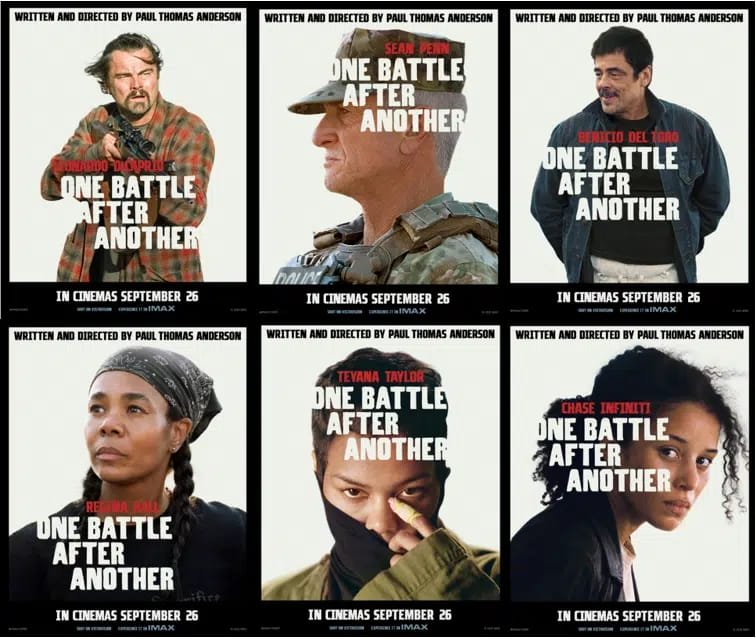
Benicio Del Toro’s Sensei Sergio (or simply Sensei) provides the film with its moral center. He is affable, capable, and his plain-spoken philosophy of “steadiness as a form of resistance” is a persuasive ethic. His perfect duality as the ultimate wingman to Bob and as a contrasting force to Lockjaw is a highlight.Newcomer Chase Infiniti is described as “revelatory” as Willa (formerly Charlene). Set against Hollywood heavy hitters, she displays a striking self-possession and confidence, elevating the material and cementing the film’s conclusion that the fight ultimately becomes Willa’s quest for her own freedom.
Technical side
Technically, the film is an astonishing spectacle. Michael Bauman’s cinematography, shot in wide-format, is stunning, turning even simple California hills into symbolic landscapes. The action sequences, like the rooftop and desert car chases, feel like classic movies “re-adapted with all the impact of a modern master.” The film benefits greatly from being seen on the largest possible screen (IMAX or 70mm).
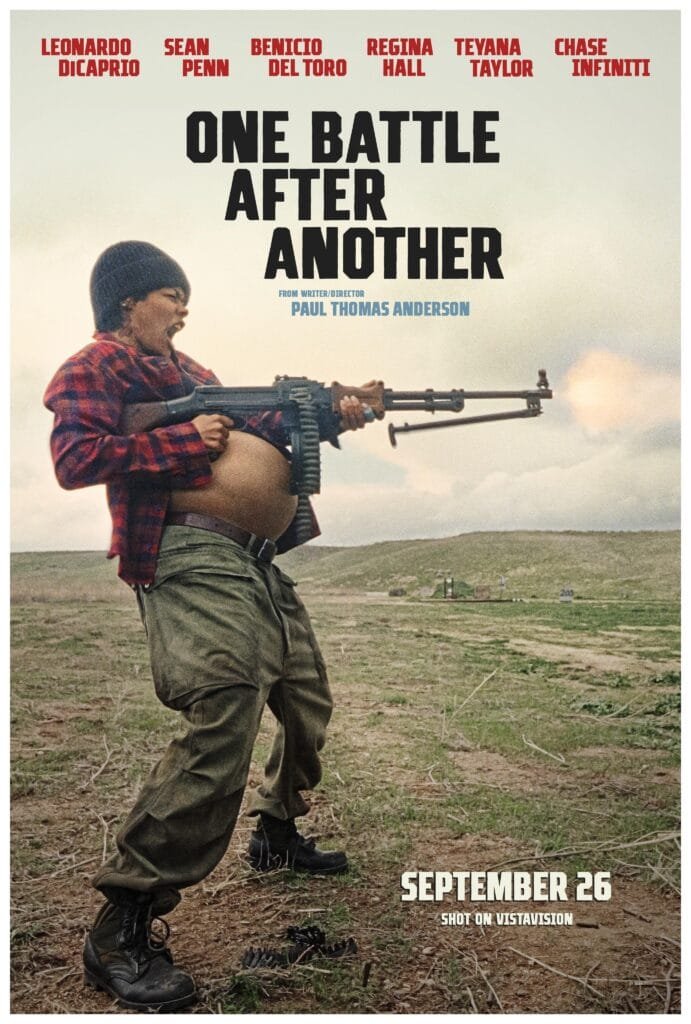
Music
The movie’s overall atmosphere is deeply enhanced by Jonny Greenwood’s score, which “twitches and pulses like the world’s most anxious heart monitor.” The score, coupled with “evocative needle drops,” contributes to the film being one of the most enjoyable theatrical experiences of the year.
Overall
The three-hour runtime, surprisingly, feels barely half that, a testament to Anderson’s masterful direction, the strong performances, and the compelling technical elements that keep the movie lively, funny, and unmistakably alive.
